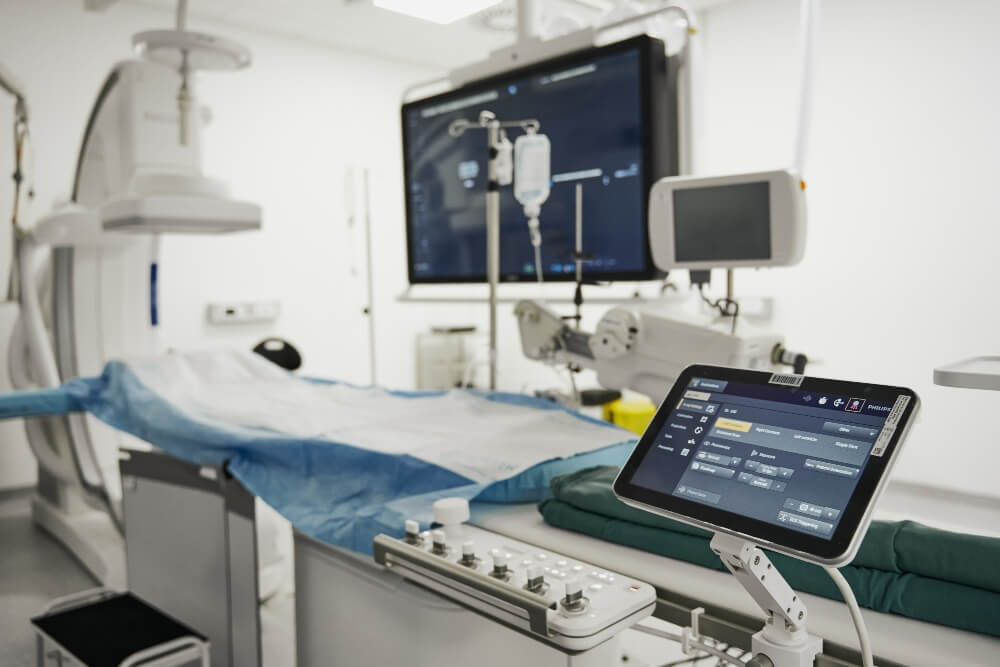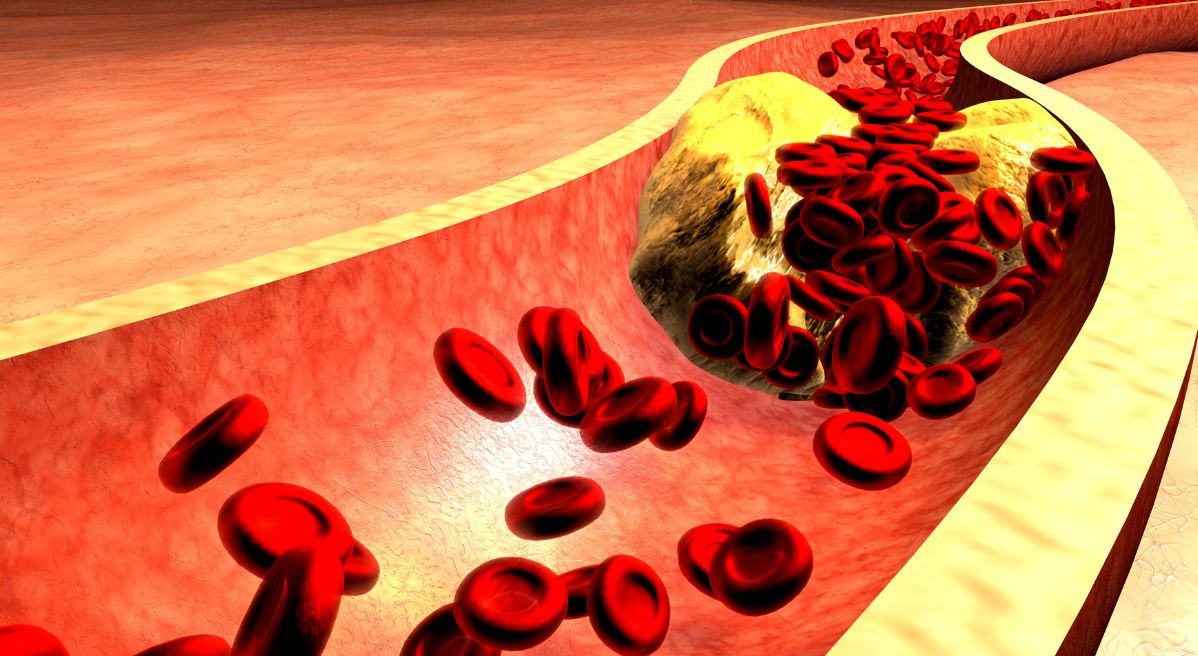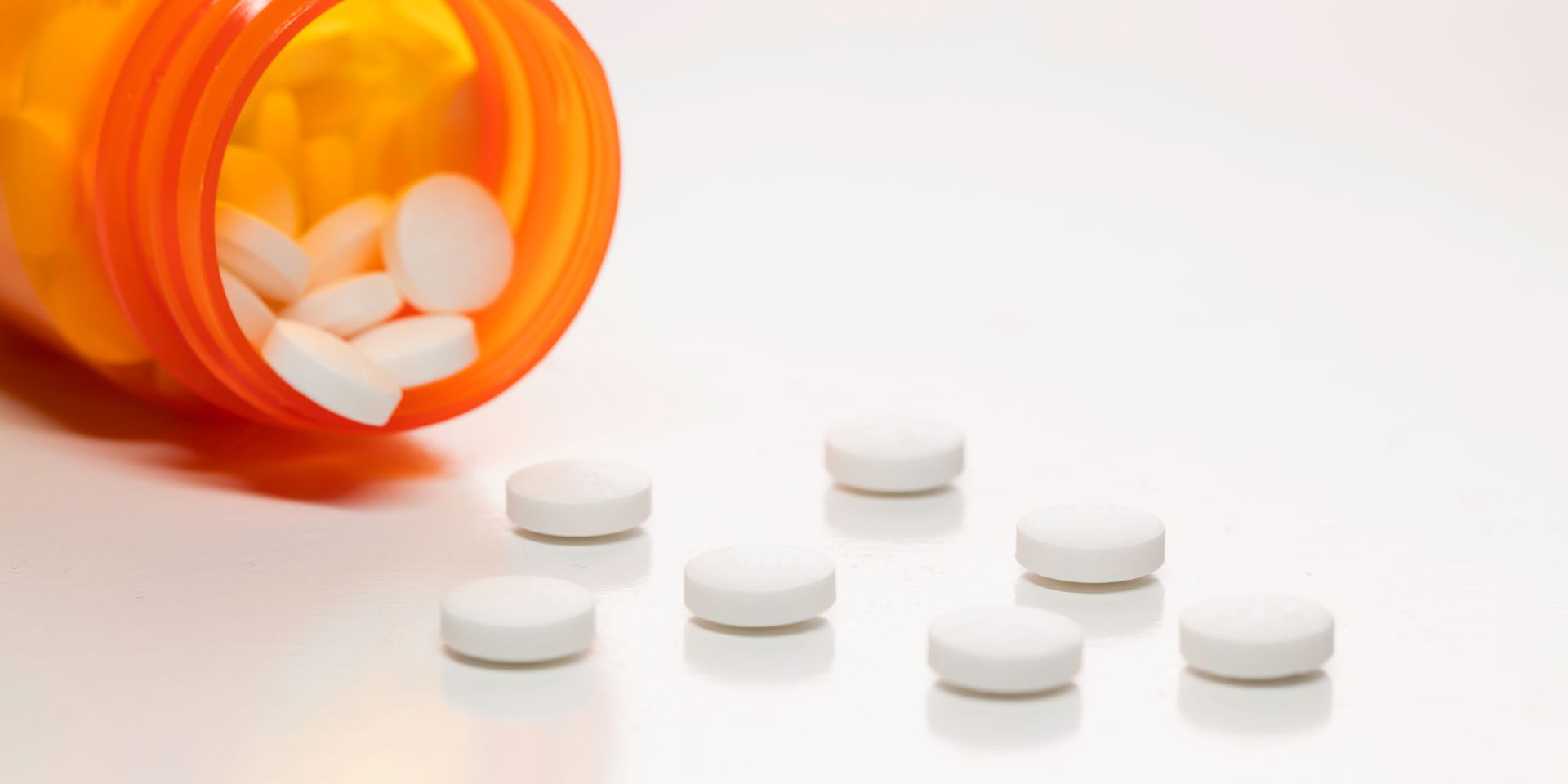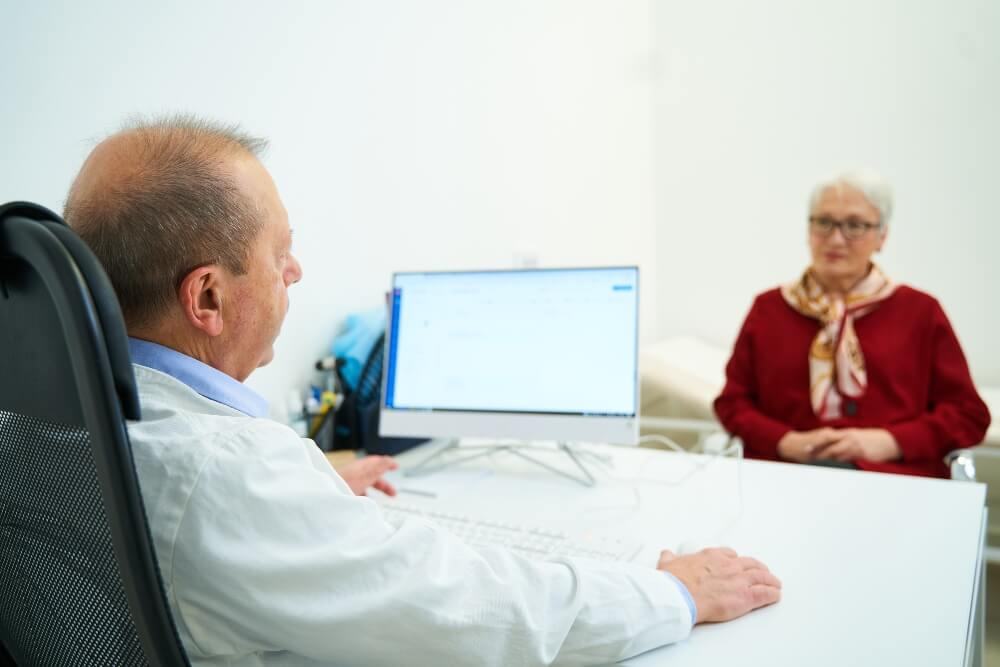Coronary angiography, or catheterization, is performed at Pulse Cardiology Center in specially equipped angiography rooms under the guidance of experienced specialists. Additionally, we offer a short waiting period for the procedure because heart and blood vessel diseases require prompt action to avoid any undesirable consequences.
We will explain what coronary angiography is, how to prepare for it, what to expect from the procedure, and the advantages it brings along.
What is coronary angiography?
Coronary angiography or cardiac catheterization is a minimally invasive procedure used to assess the condition of the coronary arteries, detect narrowing of blood vessels, and obtain important information about the heart and heart valves.
When non-invasive methods fail to provide sufficient data on the progression of a disease or the condition of the heart and the blood vessels that supply it, cardiac catheterization is the optimal solution for an accurate diagnosis. In addition to its diagnostic purposes, cardiac catheterization can also be used for therapeutic interventions if necessary.
Since this procedure involves the insertion of a catheter through the blood vessels, specifically the coronary arteries, all the way to the heart, additional instruments may be introduced through the catheter for interventions aimed at widening narrowed blood vessels, if deemed necessary by the doctor.
Throughout the procedure, a medical professional monitors the movement of the catheter using X-ray imaging, obtaining clear images of the areas being examined.
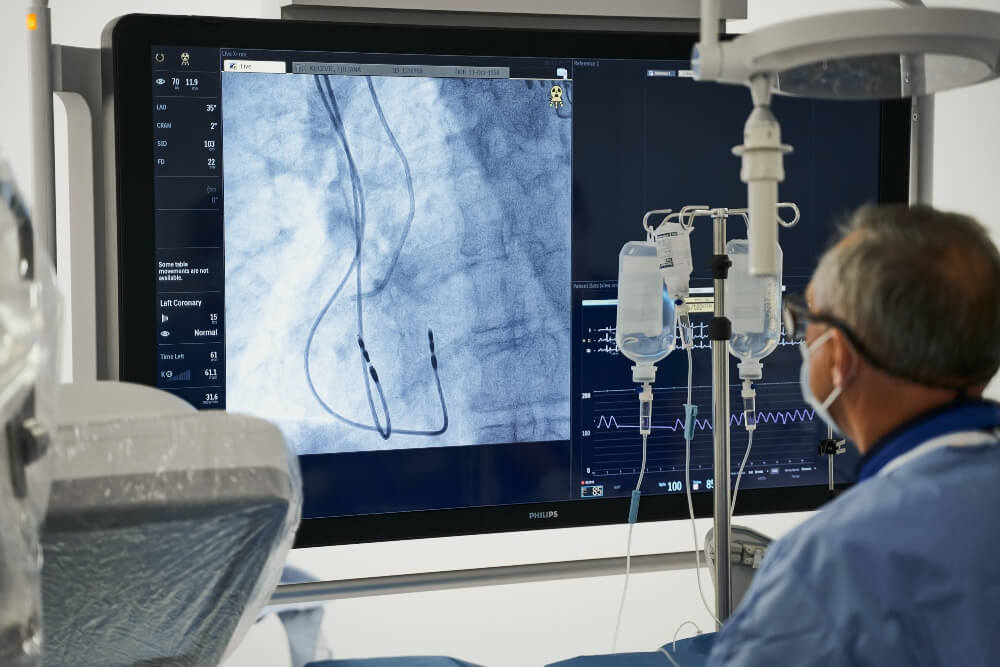
Why is coronary angiography performed?
Coronary angiography is performed for diagnostic purposes related to heart and blood vessel diseases, as well as for treatment or treatment planning.
It is most commonly performed when:
- There is suspicion of coronary artery disease.
- There is a need for direct pressure measurement in the heart chambers and major blood vessels.
- The amount of blood pumped by the heart per minute needs to be measured.
- Angina needs to be diagnosed.
- The patient has had a heart attack.
- There is suspicion of congenital heart defects.
- Tumors affecting the heart need to be diagnosed.
- Planning or performing coronary angioplasty or another procedure is required.
Coronary angiography is not usually the first method proposed to patients, but it is a common procedure because it provides highly accurate and reliable information about heart and blood vessel diseases, and it allows for immediate intervention for patients in critical condition. The decision to perform coronary angiography depends on the patient’s condition, symptom intensity, and the severity of the disease.
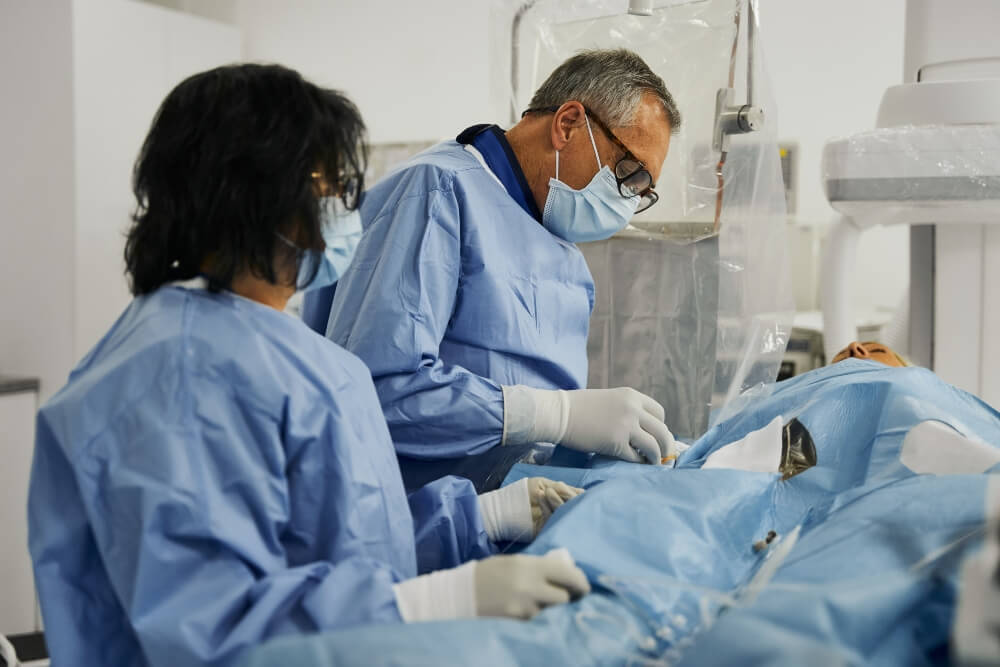 How is coronary angiography performed?
How is coronary angiography performed?
Coronary angiography (also known as coronary angiogram or cardiac catheterization) is performed in the Cath-lab under the guidance of an interventional cardiologist or radiologist.
The patient is given sedation to ensure they do not experience pain or discomfort, but they remain awake. Therefore, this procedure does not involve general anesthesia.
A medical technician prepares the site where the catheter will be inserted, which involves shaving and disinfecting the area and applying an anesthetic, ensuring that the insertion of the catheter is not painful.
The catheter is inserted through the groin or arm, depending on the specifics of the situation and the patient. The doctor first creates a puncture site using a needle. The catheter is a very thin and flexible tube through which various instruments can be inserted for diagnostic purposes and interventions.
Coronary angiography also requires the use of a contrast material to clearly visualize the blood vessels and narrowing of the blood vessels on the image. An appropriate machine that utilizes X-rays is used for imaging.
The images obtained in this manner are called angiograms, and they allow easy identification of blockages and narrowing of the blood vessels.
Coronary angiography typically takes between 40 and 60 minutes. The duration depends on the specific procedures performed, whether it was solely for diagnosis or if additional interventions such as biopsies or stent placement were carried out.
When the procedure involves clearing blocked arteries, it is called angioplasty or percutaneous coronary intervention.
During cardiac catheterization, it is also possible to perform the dilation of a narrowed heart valve, which is referred to as valvuloplasty.
Once all necessary procedures are completed, the doctor removes the catheter, and a medical technician applies pressure to the puncture site to prevent bleeding.
Is preparation required for cardiac catheterization?
Preparation is necessary before cardiac catheterization, but it is not overly demanding. It is best to discuss this with your doctor, as they will provide you with the most accurate guidance.
Usually, you are required to fast for eight hours prior to the procedure. As for information about your medication and vitamins, it is individualized, and you must consult with the doctor who will perform the procedure. You may only take what the doctor approves before the procedure. During the procedure, you can wear a hearing aid if you use one, but dentures must be removed.
How does the recovery process after coronary angiography unfold?
Recovery is much faster after this procedure compared to surgical intervention, but there are certain things to keep in mind for a smooth recovery.
After diagnostic cardiac catheterization, you will stay with us for a few more hours for observation. Describe how you feel and ask if you have any concerns. We will monitor your pulse, blood pressure, and subjective condition. There is a possibility of bruising or mild discomfort at the catheter insertion site. This usually resolves within a few days. For the first three hours after the procedure, it is advised to lie still and keep your legs in a horizontal position.
If any intervention was performed, you will stay overnight in the hospital at the Pulse Cardiology Center for further observation of your condition. Long-distance travel immediately after catheterization is not recommended. If you are more than 2 hours away from the hospital, it is advised to stay at the location where the procedure was performed overnight and then travel home the next day. After every hour of driving, take a break and walk for about ten minutes. If you need to travel by plane, consult with your doctor on how to behave, as walking will still be necessary after a period of sitting. You cannot drive yourself home after coronary angiography; someone who can drive you must come for you.
Before discharge, the doctor will provide detailed instructions on how to behave in the following period and what signs to watch out for that may indicate a worsening situation or require urgent medical attention.
Are complications possible after this procedure?
After any procedure involving invasiveness, there is a chance of complications. If you notice any of the following, immediately contact your doctor:
- Worsening swelling at the catheter insertion site
- Bleeding or leakage from the puncture site
- Numbness or circulation problems in the leg where the puncture was made
- Cold or bluish foot
Additionally, there is a possibility that the patient may be allergic to the contrast agent used. During the procedure, there is a very rare chance of damage to the blood vessel, and even rarer occurrences include heart attack, stroke, or death.
Pulse Cardiology Center is equipped with state-of-the-art technology required for performing this procedure, as well as all the necessary equipment for diagnosing and treating heart and vascular diseases. Contact us and schedule your appointment.

